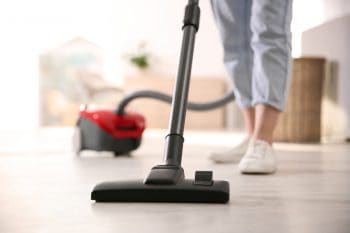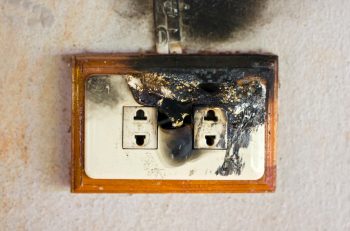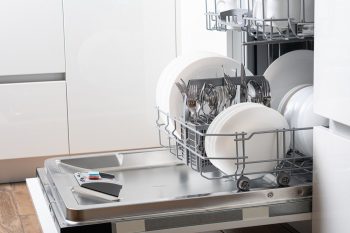
If you own a washing machine, you know that they are some of the most convenient home appliances to have in-house.
However, unbalanced washing units can be irritating when cleaning laundry, even more so when the washer stops mid-cycle.
An out-of-balance washing machine is one of the common reasons for most loud rattles and noises coming from your washer during a cycle.
In addition, unbalanced loads can also do a lot of damage to your unit.
Regardless, it can be very hectic to fix the issue without identifying the cause of your unbalanced washer load.
To this end, we have gathered some fun information to help you understand why your washer is unbalanced.
The most common non-technical reasons that might result in an out-of-balance washer include:
- Over or underloading
- Uneven base under the washer
- Clothes stuck in the drum
- Shipping materials still in the washer
However, faulty parts like suspension springs, driver bearings, shock absorbers, dampening straps, or snubber rings could also be the problem.
In addition to looking at the causes of unbalanced washing machine load, we will also look at possible solutions to the problem.
Ten Reasons the Washing Machine Keeps Going Out of Balance
Is your washer having trouble staying balanced? Here are some of the reasons your washer might be acting up.
1. Overloading
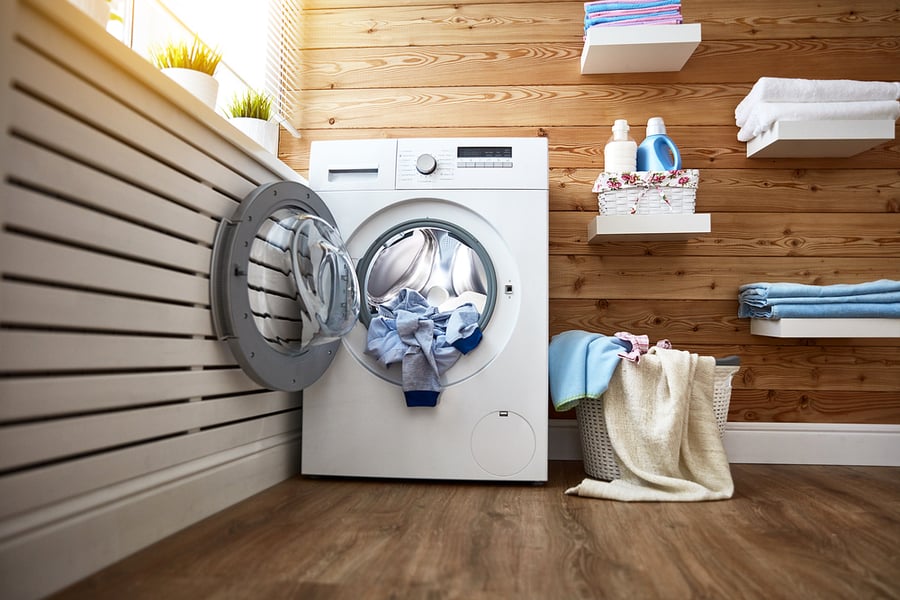
Overloading is the most common reason your washer’s load gets out of balance.
Putting too many clothes in the drum puts more strain on the washing cycle. The load does not move around freely and gets stuck on one side of the drum, causing it to go out of balance.
Overloading your machine could cost you more than you think.
It can cause permanent damage to the bearing in your washer and also damage your clothes.
If you overload your washer, it is ideal to stop the machine midway and remove any excess clothing that might be causing the problem.
2. Underloading
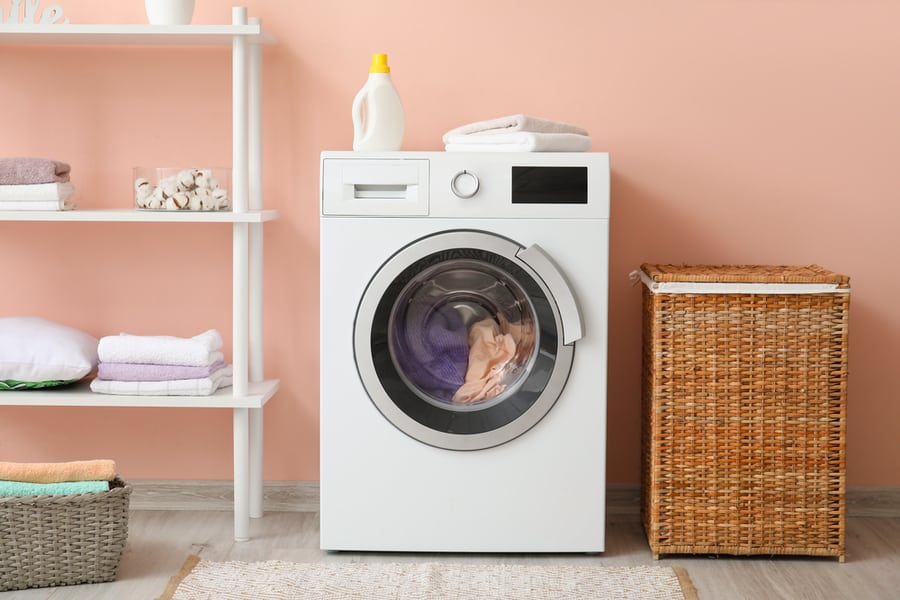
Conversely, underloading your washing machine is also not ideal for your unit.
Too few clothes can cause the drum to move more violently, leading to out-of-balanced loads.
Before adding a load to the drum, you should always check your washer’s maximum and minimum weight limit.
You can find the weight limit on the machine’s front panel or in its user manual.
3. Worn-Out Shock Absorbers

Faulty shock absorbers can also cause an unbalanced washer.
Front-load washing machines have shock absorbers that cushion and reduce the movement of the drum as the unit is in a cycle.
The shock is between the outer drum and the machine’s base frame. As they start wearing out, you might notice that your washer gets unbalanced more often.
It would be best to replace disconnected or worn-out shock absorbers before they lead to more washer damage.
Call a certified expert to help in repositioning or replacement.
4. Uneven Machine or Unstable Base
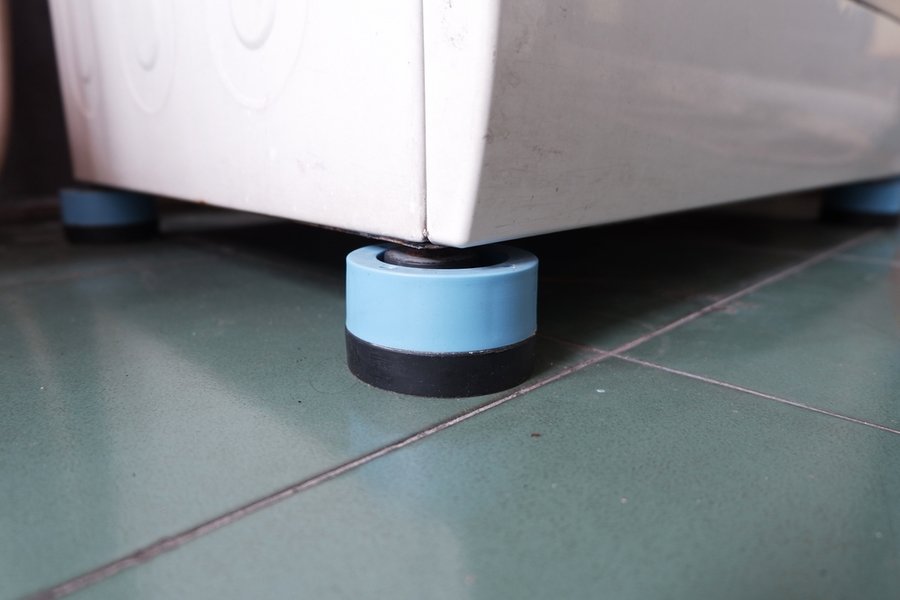
Another explanation for your out-of-balance washing unit is unlevel surfaces.
If your washer sits on an uneven surface, it tends to rock more side to side. The increased movement causes the drum to spin unevenly, inducing the machine to be off balance.
In addition, the inner drum also bangs on the side of the outer drum, leading to more vibrations and rattling in the unit.
If you are dealing with a leveling issue, you should get a bubble level to help you make proper adjustments to the washer.
Most washing units have adjustable legs that can be set to make it level. In addition, you can also use a washer trolley, cardboard, or a piece of wood to level out the machine.
5. Faulty Suspension Springs
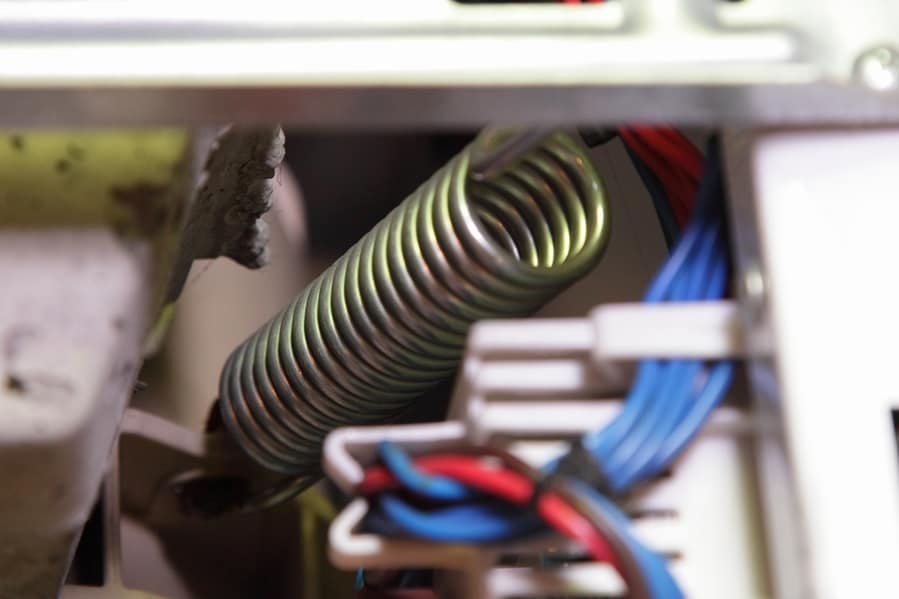
Faulty suspension springs could be another reason your washing unit is out-of-balance.
Suspension springs are found in both front-load and top-load washing machines. They support the outer drum and keep it steady once you put in a laundry load.
The washer’s loads get off-balance if the springs wear out, break, or lose elasticity.
In addition, faulty springs can cause more movement in the drum, leading to excessive shaking, vibrations, noises, and leaks.
If you think the washer’s suspension springs are faulty, you should always call a repair professional to help.
6. Shipping Material

The excitement of getting a new washer can be overwhelming.
In all the anticipation, it is easy to forget to take out all the shipping materials before turning on the washing unit.
Washing units have shipping traps, bolts, and padding to secure the drum during transportation.
Failure to remove these materials can cause a problem with the washer’s cycle, leading to unbalanced drums and potential damage to the machine.
During installation, you need to take out all shipping materials, including those inside the drum, before using the washer.
If you are unsure how to install your unit, you can always consult the installation instructions in the user manual or call customer support.
7. Worn-Out Driver Bearings
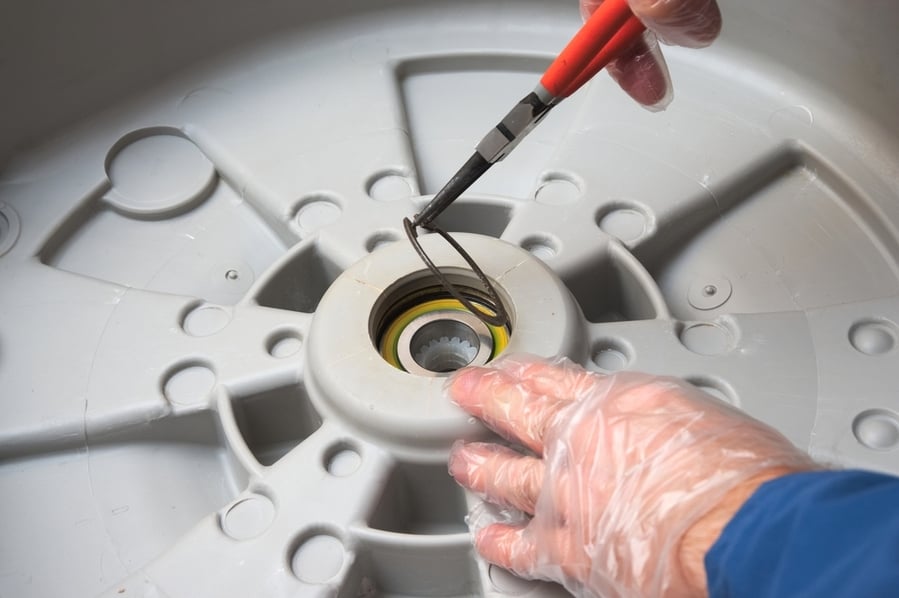
Additionally, worn-out driver bearings might be why your washing machine is unbalanced.
Driver bearings are an essential component of the washer found below the outer tub between the spindle and the motor shaft.
The metal rings help support the rotation of the drum.
Worn-out bearings not only cause the washing unit to be out-of-balance but also leads to ear-shattering noises, leaking, and damage to other parts of the washer.
If your machine’s bearings are faulty, your best bet is to call a repair expert to replace them before extensive damage is done.
8. Loose or Broken Dampening Straps

Loose or broken dampening straps can also cause the washer to be unbalanced.
The tub dampening strap is found at the bottom of the washing drum and helps support it and keep it at the cabinet’s center.
If the strap breaks or loosens, you will notice that the washing unit becomes louder with more vibrations, banging, and the tub is often off-balance.
You should call a professional if you need the dampening strap repositioned or replaced.
9. Laundry Caught Between or Below the Tub

During a spin cycle, it is easy for clothes to get caught below the tub or between the inner and outer tub. This can result in the washer load becoming off-balance.
If you run into this problem, the best thing to do is stop the washing machine and remove the clothes that are stuck below the drum.
In case clothes are stuck between the tubs, you should take off the top or front panel and the agitator to get easy access to them.
If you do not know how to remove the panels or the agitator, call a professional to help.
10. Worn-Out Snubber Ring

Lastly, the other reason your washer might be out-of-balance is due to a worn-out snubber ring.
The snubber ring is between your washer’s leg and the dome assembly. The ring is responsible for reducing vibrations and noise in the machine.
However, if the rings are broken or faulty, your load will become off-balance, the washer will start rattling, and a whirring noise can be heard during a spin cycle.
Replacing the snubber ring requires opening up the washer and disassembling some critical parts, like the suspension springs, to access it.
You should always call in a qualified technician to work on the repairs.
Summary
Before fixing off-balanced washers, the most important thing is to identify what caused the problem.
The main culprits of the issue that can be easily fixed without repairs include over or underloading, unlevel washing machines, shipping material still stuck in the tub, and clothes getting caught in the washer.
However, if you have faulty parts like shock absorbers, driver bearings, or snubber rings, you will need to replace the parts to get your machine’s load balanced again.
Regular maintenance of your washing unit can help identify these issues beforehand and prevent the washer from getting out of balance.
Different washing machines have specific parts that cannot be interchanged.
You should only use original equipment manufacturer (OEM) parts when repairing your washer.
Frequently Asked Questions
Can Overloading Cause Your Washer To Become Off-Balanced?
Yes! Clothes in an overloaded washer do not move freely and can be stuck to the side of the tub, leading to an out-of-balance tub.
Can You Stop Your Washing Machine Mid-Cycle if You Notice That the Load Is Out of Balance?
It is recommended to stop your washer if you notice that the load is not balanced.
This also protects the washer from damage caused by vigorous vibrations or worn-out parts.

